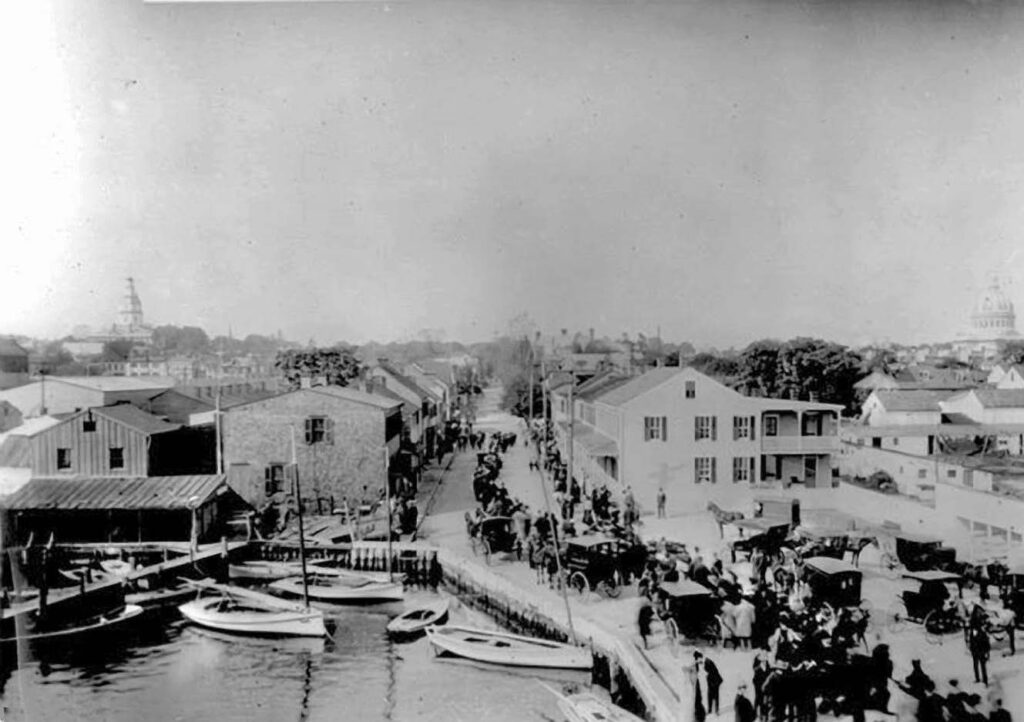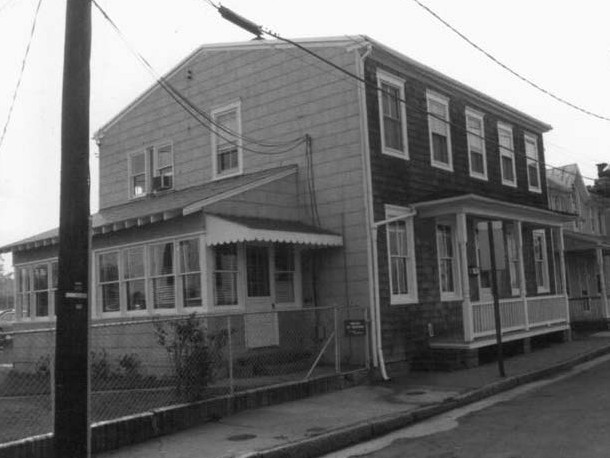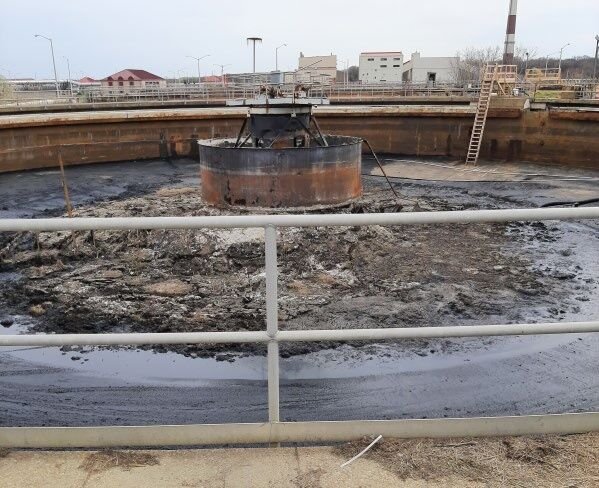It’s one of the last reminders of the original Annapolis City Dock—once a thriving watermens’ port, now a place to stroll with an ice cream cone or dock a small center-console while dining ashore.
The Historic Burtis House, on Prince George Street, is the only waterman’s cottage left among tourist spots. That made historians and Annapolis leaders determined to preserve it. After years of planning, work has finally begun to save the house.
Starting on Monday, Nov. 11, crews are preparing to stabilize the structure of the 19th-century cottage. It’s the first step of Phase I of the Rehabilitation Plan, overseen by Preservation Maryland. Richard Hammond Builders of Centreville, just over the Bay Bridge, will carry out stabilization and Annapolis’s own HD Squared Architects is doing the architectural work.
Preservation Maryland led the charge to preserve the Burtis House as an asset to City Dock. Back in 2018, City Dock was named among America’s Most 11 Endangered Historic Places by the National Trust for Historic Preservation.

A 2020 City Dock Action Committee report calls out the Burtis House specifically: “The Burtis House is a unique remnant of the City’s working maritime history…the significance of Burtis House is inextricably linked to its historic location.”
The Burtis House belonged to Capt. William Henry Burtis, who began renting out small boats, skippering sailboat cruises, and supplying fishing tackle and bait from his house and the nearby wharf in the 1890s. The house remained in his family for 90 years. Around it, canneries, seafood packing houses, and freight rail service shipped Chesapeake Bay harvests.
Located at 69 Prince George Street, the building was most recently home to the National Sailing Hall of Fame. That organization moved to Newport, Rhode Island, in 2019.
With the Burtis House vacant, the City Dock Action Committee’s report called for interventions that would remediate damage, retain the building’s 19th-century appearance, and give it a new active use in tourism or education.
“The importance of saving a humble structure like this is it connects visitors and the community to the story of the working waterfront,” said Nicholas Redding, President & CEO of Preservation Maryland. “This project is not just a pilot for Maryland, but also a demonstration project for the rest of the country. Anywhere you go in the world, historic resources sit at the water’s edge. We must protect these resources and heritage, particularly those affected by an ever-changing climate and sea level rise.”
Crews have their work cut out for them. After the Burtis House is stabilized, they will need to repair damage from multiple previous flooding events. Then, the house will be raised 9.5 feet, putting it above the flood elevation of City Dock and protecting it against impacts of climate change including sea level rise, subsidence, and coastal, high tide, and further stormwater flooding.
Along with a new, raised foundation, the City of Annapolis will make improvements to the property, which is managed by the Harbormaster. Eventually, the city says the Burtis House will become the Maritime Welcome Center, connecting to the Harbormaster headquarters and Visit Annapolis.
The Burtis House preservation work is funded by the Maryland Heritage Area Authority ($100,000) and the State of Maryland ($75,000), National Park Service (NPS) Chesapeake Gateways program ($418,481 in total), and the City of Annapolis (Phase II: $1,000,000).




